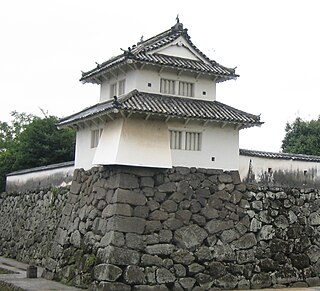Shogi, like western chess, can be divided into the opening, middle game and endgame, each requiring a different strategy. The opening consists of arranging one's defenses and positioning for attack, the middle game consists of attempting to break through the opposing defenses while maintaining one's own, and the endgame starts when one side's defenses have been compromised.
A shogi opening is the sequence of initial moves of a shogi game before the middle game. The more general Japanese term for the beginning of the game is 序盤 joban.
In shogi, Third File Rook is a class of Ranging Rook openings in which the rook is positioned on the third file if played by White or the seventh file if played by Black.
Left Silver-57 Rapid Attack or Left Silver-5g Rapid Attack or Left Silver-5g Quick Attack is a fast attacking strategy in shogi used with several different Static Rook openings often played by Black against Ranging Rook positions played by White. It is characterized by moving the left silver from its start position on 79 to the 57 square.
In shogi, Cheerful Central Rook is a type of Central Rook opening in which the Central Rook player's bishop diagonal remains open.
In shogi, the Bishop Exchange Fourth File Rook or Open Bishop Diagonal Fourth File Rook is a Fourth File Rook opening in which the player's bishop diagonal remains open allowing for a bishop exchange to occur early in the opening. Following the bishop exchange, the rook is moved to the Fourth File.
In shogi, Central Rook is a subclass of Ranging Rook openings in which the rook is positioned on the fifth (central) file.
In shogi, Iijima Bishop Pullback or Iijima's Back Bishop is a less common defensive Static Rook opening used against a Ranging Rook opponent. It has been used in both Black and White positions by professional players.

Yagura or Fortress is a castle used in shogi. It is considered by many to be the strongest defensive position in shogi in Double Static Rook games.
In shogi, Double Ranging Rook is a class of Ranging Rook openings in which both players choose a Ranging Rook position.
In shogi, Primitive Central Rook is a Central Rook opening in which the player attacks their opponent very aggressively and early usually giving up castling the king.
Central Rook Left Anaguma is Central Rook opening (戦法) used in Double Ranging Rook games.

